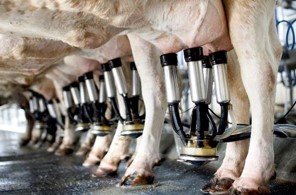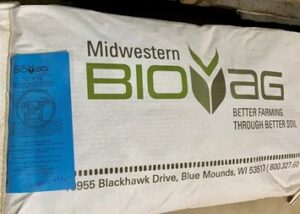Milk Urea Nitrogen (MUN)
Milk processing plants and DHI can provide dairy managers with milk urea nitrogen (MUN) values on bulk milk and individual cow milk samples. MUN tests are useful tools that can allow the dairy managers to monitor changes in the feeding and management of their herd. Milk urea nitrogen is the fraction of milk protein that is derived from blood urea nitrogen (BUN). In Holstein’s MUN normally represents about 0.19 percentage points of the normal 3.2% total milk protein. Average MUN values will range from 10 to 14 milligrams per deciliter (usually reported as a whole number such as 12). When cows consume feed containing protein, sometimes bacteria in the rumen cannot capture the ammonia and convert it to microbial protein. The excess ammonia is absorbed across the rumen wall. Because ammonia can shift blood pH, the liver converts ammonia to urea to be excreted or recycled. Urea diffuses freely across cell membranes, therefore MUN concentrations represent blood urea concentrations. Thus, if BUN values are elevated, MUN will be elevated. If MUN values are high, your herd is possibly wasting feed protein along with excreting excess nitrogen into the environment. If MUN values are too low, the rumen bacteria yield can be reduced thereby limiting milk production and milk protein yield.
Feed and Management Changes Leading to Higher MUN Values
- New crop corn silage may not have the same level of fermentable carbohydrate (less starch or starch is not available).
- Putting cows on lush pasture can increase total and degradable protein intake.
- Shifting to a different crop of hay silage that is wetter or higher in crude protein can elevate
- Grinding your grain coarser may reduce the rate of fermentation in the rumen.
- Shifting from processed corn silage to unprocessed or improperly processed corn silage means less fermentable starch is
- Shifting to a more degradable protein source (shifting from heat-treated soybeans to raw soybeans for example) results in more rumen
Feed and Management Changes with Low MUN Values (<8-9)
If the rumen does not maintain a minimum level of ammonia, milk yield and milk protein yield may drop because of reduced microbial protein synthesis. If your herd MUN is low, consider adding supplemental protein sources and/or other ration change and then monitor your herd for changes in MUN concentrations.
There are several factors that can influence your MUN values. These include:
Breed – Holsteins usually have a lower MUN value than other dairy breeds. However, this may be due to body weight rather than a breed difference.
Season – MUN values tend to be higher in the summer months.
Sampling time – MUN values usually peak 3-5 hours after feeding.
Milking frequency – Herds milked 3x a day tend to have a higher MUN value than herds milked 2x a day.
MUN is one tool to evaluate ration protein and energy status. Here are some steps to evaluate when managing MUN values.
- Check rations to determine if the crude protein is too low or too high.
- Check ration starch levels and ration sugar
- Evaluate the ratio of true milk protein to milk For Holsteins, the ratio of milk true protein to milk fat is 82 percent (for example 3.0 percent true milk protein and 3.7 percent milk fat). A low MUN could result in a value of less than 75 percent.
- Evaluate manure consistency. Cows with low MUN could have firm manure compared to cows with high MUN and looser However, there are a number of other factors that can contribute to manure consistency differences in a herd.
If MUN levels (10-14mg/dl) are outside normal ranges, look at ration balancing results, milk components, feeding management, and nutrient balance.
Product of the Week
Our “O” PYK and PYK blend is a probiotic, yeast and kelp combination specifically designed to maximize digestive tract health and efficiency in all livestock. “O” PYK and PYK can be used in all livestock rations. It is an excellent digestive track stabilizer for livestock undergoing ration changes. “O” PYK is allowed for use on organic farms — check with your local organic certifying agency for acceptance before using this or any feed supplement.
Product Characteristics
-
-
-
-
-
-
-
-
- Contains live, beneficial bacteria (including Lactobacillus acidophilus) and live yeast cells.
- Provides digestive
- Contains Icelandic kelp as a source of over 60 trace min erals and vitamins.
- Helps improve fiber digestion, reproduction, immune system function, and hoof health.
-
-
-
-
-
-
-




